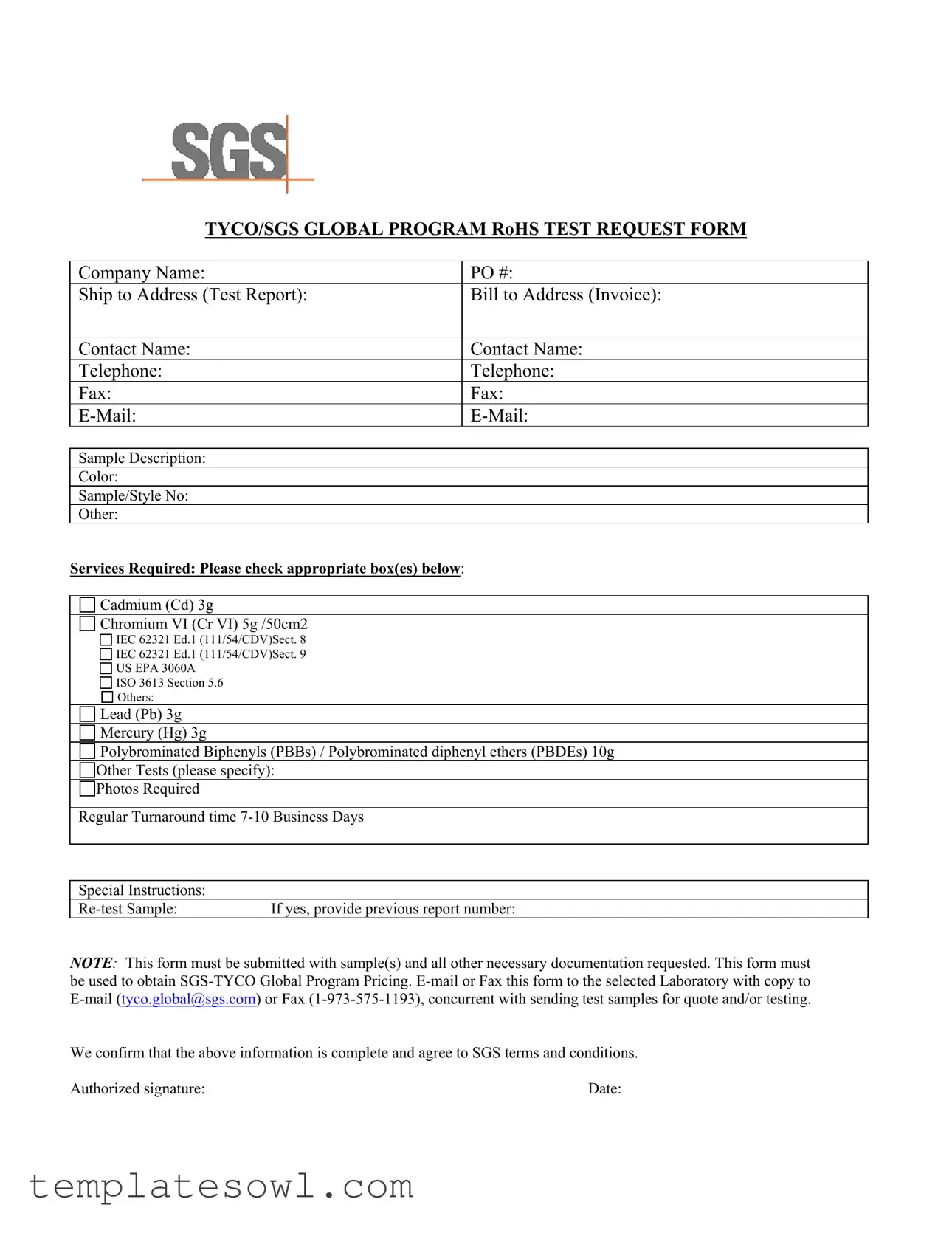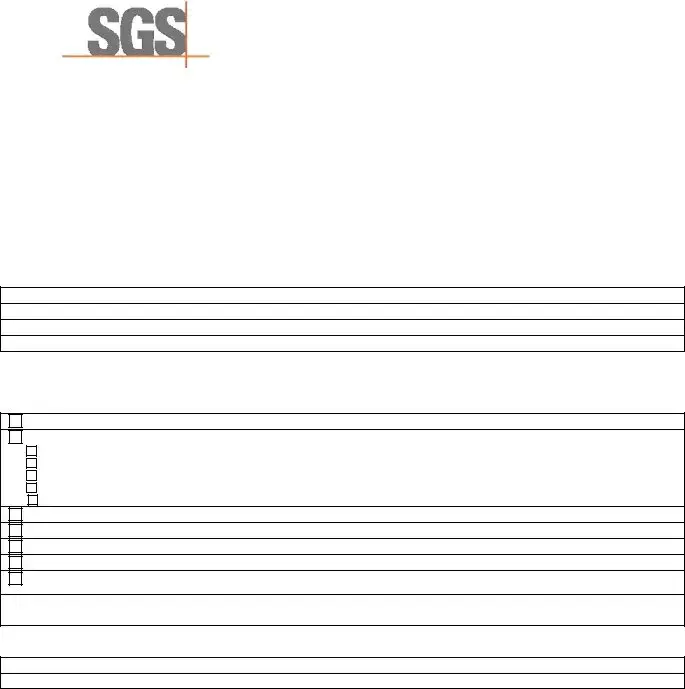What is the SGS form?
The SGS form is a RoHS test request form used by companies to submit samples for testing and analysis to ensure compliance with environmental regulations, specifically the Restriction of Hazardous Substances (RoHS) directive. This form collects essential information about the company, sample, and required services.
What information do I need to provide on the SGS form?
When filling out the SGS form, you will need to provide details like your company name, purchase order number, shipping and billing addresses, and contact information. Additionally, you'll describe your sample, including its color and style number, and select the services you need.
How do I know what tests to request on the form?
The form provides a list of tests related to hazardous substances, such as cadmium, lead, mercury, and various brominated compounds. Choose the tests that apply to your sample based on its materials and the regulations it must meet. If you need additional or specific tests, you can specify them in the “Other Tests” section.
What is meant by "Turnaround time" on the form?
The turnaround time refers to how long it will take to receive the test results after the laboratory receives the samples and the completed SGS form. A regular turnaround is typically 7 to 10 business days, but this may vary based on the type of testing requested or the laboratory's current workload.
Can I request a re-test using the SGS form?
Yes, if you need to re-test a sample, you can indicate this on the form. Make sure to provide the previous report number to ensure the laboratory references your earlier results during the re-testing process.
What should I do if I have special instructions for the testing?
If you have specific requirements or special instructions, you can include them in the “Special Instructions” section of the form. This allows the laboratory to accommodate any unique needs you may have for your testing order.
How do I submit the SGS form?
You need to submit the completed SGS form along with your samples. You have two options for submission: Fax the completed form and supporting documents to the designated laboratory, or email them to the provided address. Ensure you send the form concurrently with the test samples to avoid delays.
What happens if I forget to include required information?
If you fail to include necessary details or documentation, the testing process may be delayed. For a smooth experience, double-check that all sections of the form are filled out completely before submission.
Is there an authorization needed on the SGS form?
The SGS form must be signed by an authorized company representative, indicating that the information provided is accurate and that you agree to the terms and conditions outlined by SGS. This signature is vital for the processing of your request.
What is SGS's role in the testing process?
SGS is a global leader in inspection, verification, testing, and certification. They help ensure that products meet safety and environmental standards, including RoHS compliance. By utilizing their testing services, you can be confident that your products meet the necessary regulations and standards.

